Summer has burst onto the Peruvian coast! It stretches its splendor from Tacna to Tumbes, and temperatures have soared, ranging from 25 to 35 °C.
How many departments enjoy the waters of the Pacific Ocean?
Of the 24 departments that make up the coastal territory of Peru, 11 of them (Tumbes, Piura, Lambayeque, La Libertad, Áncash, Callao, Lima, Ica, Arequipa, Moquegua, and Tacna) have the privilege of enjoying the breathtaking view of the Peruvian coastline in the waters of the Pacific Ocean, also known as the glorious Sea of Grau.

How is the Peruvian coast divided?
The narrow longitudinal strip of the Peruvian coast extends along the territory, characterized by flat and low-altitude geography. It naturally divides into three sectors: Northern Coast, Central Coast, and Southern Coast.
Northern Coast:
The northern coast is characterized by a warm climate, with an average temperature of around 23-25 °C (73.4-77 °F). In the regions of Piura and Tumbes, rainfall ranges from 50 (1.96 in) to 200 mm (7.87 in) only during the summers. This climate is classified as tropical-dry, also known as a tropical savanna type.
Comprising the departments of: Tumbes, Piura, Lambayeque, and La Libertad.
Central coast:
The central coast is located between the rear end and the lower end of the Peruvian coast, hosting the capital, Lima. This region is characterized by its desert climate, with a scarcity of rainfall throughout the year. The climate in the central coast is temperate-warm, without extremes of cold or heat. Summers are mostly clear and hot, with maximum temperatures ranging between 26 °C and 28 °C (78.8°F and 82.4°F). In late February and early March, the temperature tends to rise, reaching some days up to 30°C (86°F), accompanied by noticeable humidity that creates sultriness, raising the perceived temperature by up to 3 degrees.
Comprising the departments of: Áncash, Lima, Callao, and Ica.
South Coast:
At the feet of Peru’s narrow longitudinal strip, we find the south coast, the least humid and with warm summers, where temperatures reach up to 28 °C (82.4°F) in the late afternoon and 20 °C (68°F) in the early mornings. Unlike other regions of the south coast, the Nazca Desert region experiences higher temperatures, reaching up to 32 °C (89.6°F).
Comprising the departments of: Arequipa, Moquegua, and Tacna.
Now that you have a deeper understanding of the Peruvian coast, we invite you to discover the best beaches to enjoy this summer.
If you’re planning a trip to Peru, we recommend including the Peruvian coast in your itinerary, especially if your visit is scheduled for the summer season. Our Peruvian coast boasts numerous dreamy beaches that you should add to your list. In fact, even crafting a list of the top 10 beaches might fall short given the charm of so many destinations. Peru offers a variety of paradisiacal beaches that deserve to be explored. Below, we present the top 5 beaches in each sector of the coast. Take note!
Top 5 beaches of the northern coast:
Punta Sal:
The northern treasure, located in the department of Tumbes, is distinguished by its warm, turquoise, and serene waters. Additionally, its water currents and favorable winds provide an ideal setting for water sports such as surfing, diving, kitesurfing, and windsurfing. It is also the perfect place to enjoy sports fishing and motorboating. Furthermore, we cannot overlook other amazing experiences that this place offers, such as the thrilling sighting of dolphins and the majesty of humpback whales, which traverse these waters from July to October. A unique opportunity to witness the wonder of marine life in its full splendor!
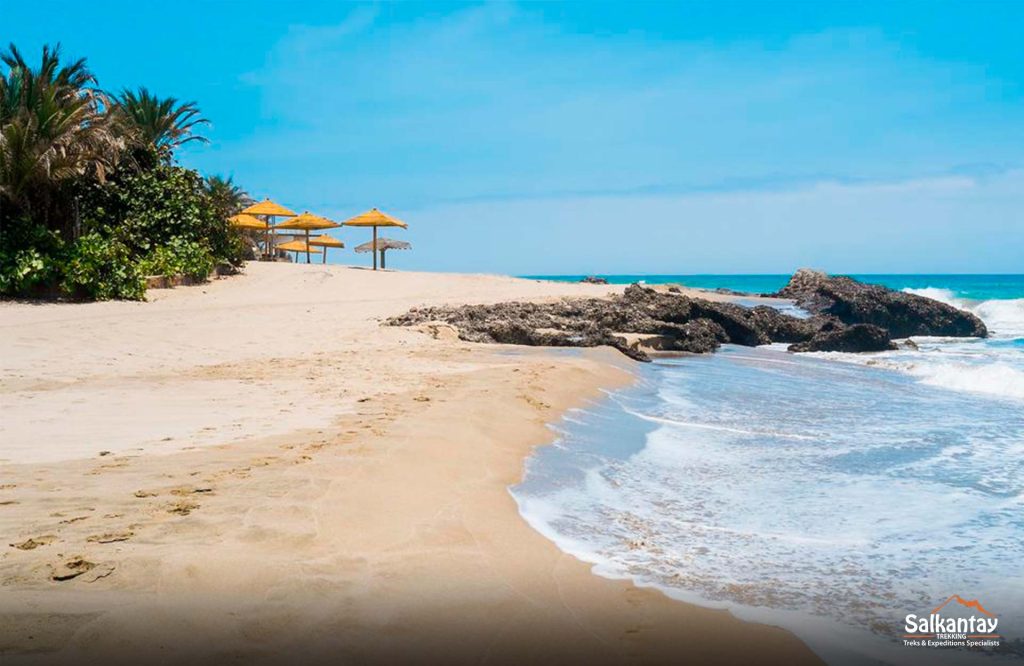
Zorritos:
It is located in Tumbes and stands as the perfect destination to enjoy unforgettable days with family. This northern paradise is distinguished by its white sandy beaches, caressed by a calm and warm sea. Furthermore, Zorritos offers a variety of attractive accommodations that ensure all the comforts for your vacation to be a truly enjoyable experience. Immerse yourself in the charm of Zorritos and create unforgettable memories with your loved ones!
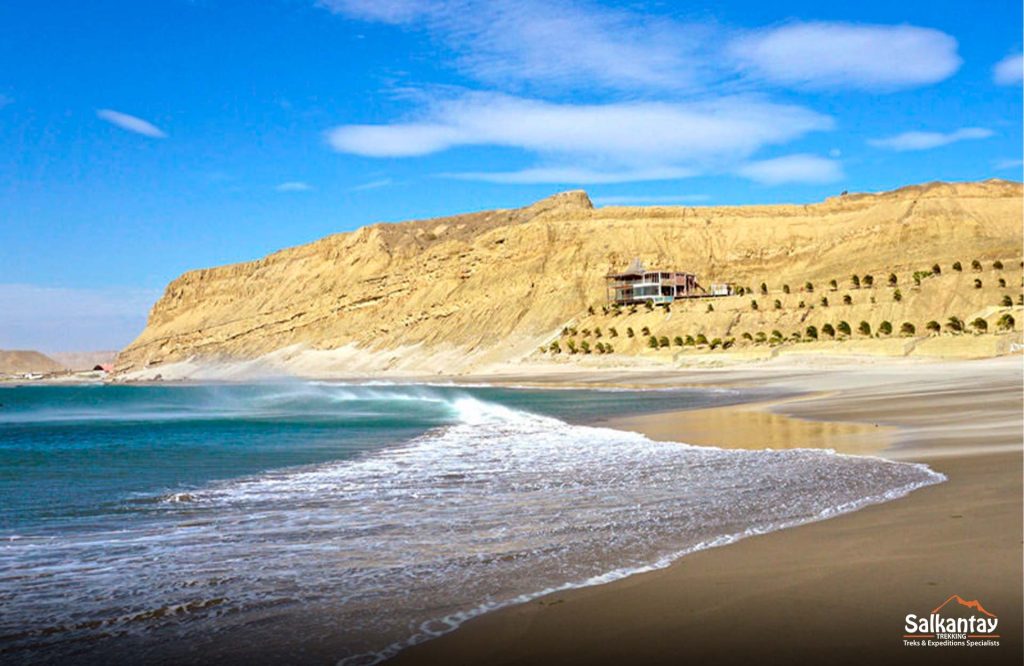
Vichayito:
Just 35 kilometers from Punta Sal, Vichayito stands out with a unique blend of tranquility, warmth, and paradisiacal beauty. This northern beach attracts the attention of tourists seeking the thrill of kitesurfing and diving, allowing them to enjoy the stunning variety of marine life. Additionally, you can delight in its beautiful sunset while taking a horse ride along the shoreline. Vichayito, a destination that combines adventure with serenity!

Los Órganos:
This beach stands out as one of the most beautiful on the northern coast of Peru, thanks to its turquoise waters and crystalline sand, making it the preferred destination for those seeking dreamy beach days, tranquility, and relaxation. Moreover, if you are a lover of perfect waves, this place is ideal for practicing water sports such as kayaking, surfing, windsurfing, and fishing.
On the other hand, its artisanal pier provides the perfect setting to observe the white-sailed rafts used by fishermen, creating an unforgettable visual spectacle.

Máncora:
Considered one of the most prominent resorts on the Peruvian coast, Máncora stands out for its warm waters and perfect waves for surfing and bodyboarding. Just 4 km south of Máncora, you’ll find ‘Las Pocitas,’ which, as its name suggests, forms small pools during low tide, providing bathers with the experience of enjoying natural pools.
In addition to its natural charms, this northern gem offers a wide variety of spa hotels and excellent quality services, ideal for both families and couples.

Top 5 beaches of the central coast:
La Mina (National Reserve of Paracas)
It is one of the most acclaimed tourist spots due to its beautiful crystalline waters, fine light-colored sand, and stunning rocky cliffs. Along with El Raspón and La Roja, it is one of the most visited by tourists exploring the National Reserve of Paracas. Moreover, the sea is calm, and the atmosphere is quite tranquil and private, making it the perfect choice for families traveling with children.
With conditioned access through long stairs, from which you can appreciate the beauty of the landscape, La Mina offers a charming setting. This beach is especially attractive for diving enthusiasts, as it harbors a wide variety of marine flora and fauna, as well as artisanal fishing activities.
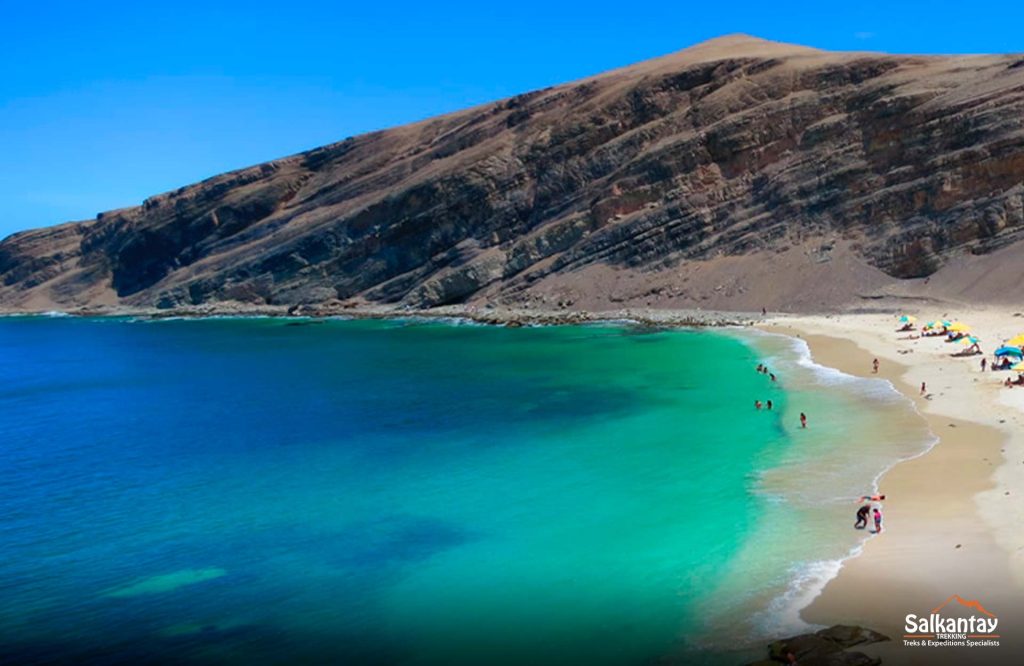
Playa Roja (National Reserve of Paracas)
Recognized as the most famous beach in the National Reserve of Paracas, it stands out for its distinctive reddish-toned sand, giving it a unique landscape. Although swimming is prohibited on this beach, it is undoubtedly a destination you should add to your list, as you will be amazed by the views it offers.
If you are passionate about photography, do not forget to bring your camera to capture the beauty of this beach from different angles.

El Raspón (National Reserve of Paracas)
It is one of the most frequented beaches in the National Reserve of Paracas. Its golden sand and turquoise waters, which take on greenish hues in the depths, make it a unique place. Unlike other famous beaches in the area, such as La Mina, this beach is generally not as crowded. Therefore, if you are looking for a peaceful escape, El Raspón is the ideal place to enjoy the peace of nature.

El Silencio:
At kilometer 43 on the Panamericana Sur is El Silencio, whose name dates back more than 50 years. It was baptized by a group of passionate surfers who, upon discovering its impressive waves and wanting to keep them a secret for their own enjoyment, named it ‘El Silencio.’ Previously, it was known as ‘Jahuay.’ This resort is recognized as one of the best on the coast for its crystalline waters and white sand, gaining popularity thanks to its wide bay of white sand and perfect waters for water sports.
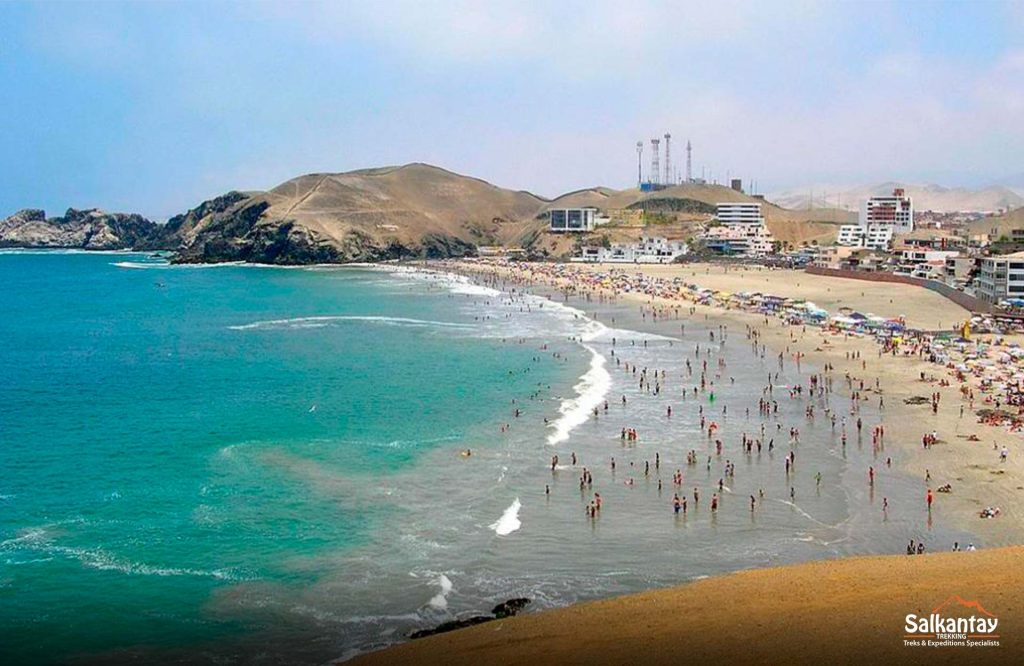
Punta Hermosa:
About five kilometers south of ‘El Silencio,’ you’ll find one of the most well-known and traditional resorts in Peru: Punta Hermosa. This place features small coves with fine white sand and turquoise waters, ideal for surf enthusiasts. Every summer, hundreds of people head to enjoy the day on its beaches, and many choose to stay for the entire season in their properties.

Top 5 Beaches of the Southern Coast:
Puerto Inca:
Located in the north of Arequipa, this beach is named after being the endpoint of the Qapaq Ñam or Inca Trail, which extended from Cusco to this place. With its calm waters, this beautiful beach is the perfect setting for sports such as kayaking and paddle tennis. In addition to enjoying sports activities, visitors can explore the archaeological complex of Quebrada de la Waca, which includes chullpas, tombs, and squares, providing a unique tourist experience.
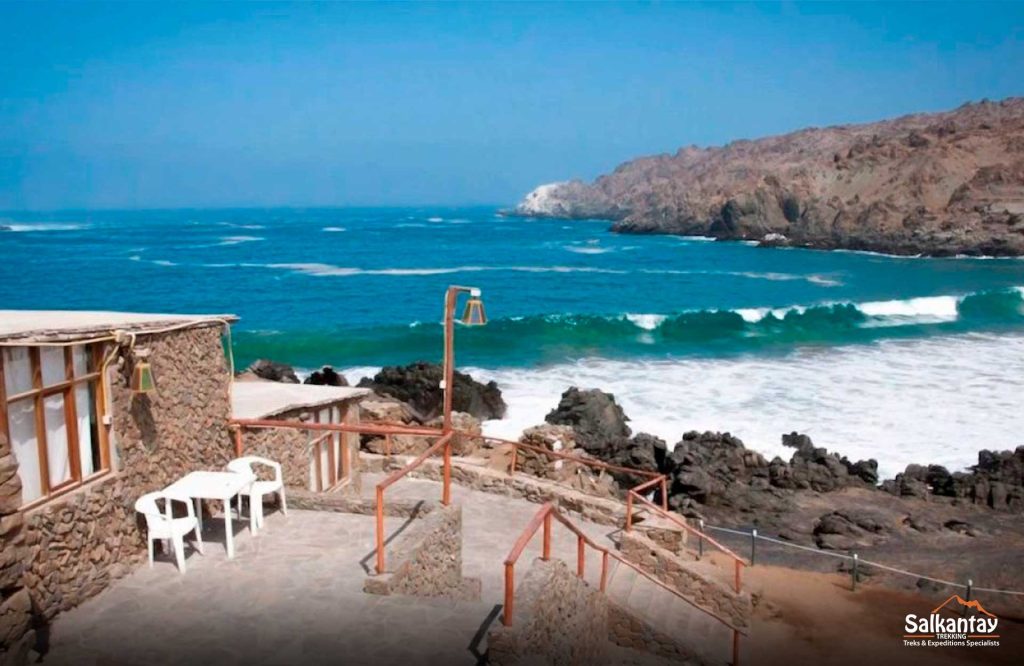
Camaná:
In the center of the Arequipa coast lies Camaná, a circuit formed by wide beaches frequently visited by locals, such as Punta Cerrillos or La Miel. In addition to enjoying its delightful waters, this place offers cultural enrichment through exploration of other tourist attractions such as the Inca Citadel of Pillistay, the Water Park of Camaná, or the Archaeological Complex of Monte Pucor. Beach and culture converge in one place!

Mollendo:
Surrounded by old wooden mansions and vast beaches of fine sand, Mollendo stands out as one of the favorite beaches for the people of Arequipa. Visitors come here to enjoy pleasant evenings, savoring the privileged view of sunsets from its beautiful 200-meter-long pier.

Platanales:
It is characterized by its fine sand and warm, crystal-clear, celestial-colored waters. In addition to its natural charms, this beach is formed by three ravines with spring-fed pools and features numerous caves adorned with petroglyphs. For those who enjoy the camping experience, Platanales presents itself as the ideal beach.

Puerto Inglés:
South of Ilo, you will find Puerto Inglés, with calm waters and surrounded by high rocky cliffs. It is one of the favorite beaches for many, as it provides the experience of enjoying its sea as if it were a dreamy large pool.









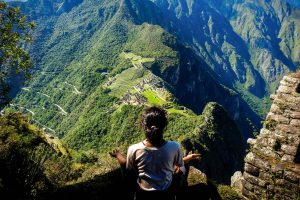


Leave A Reply